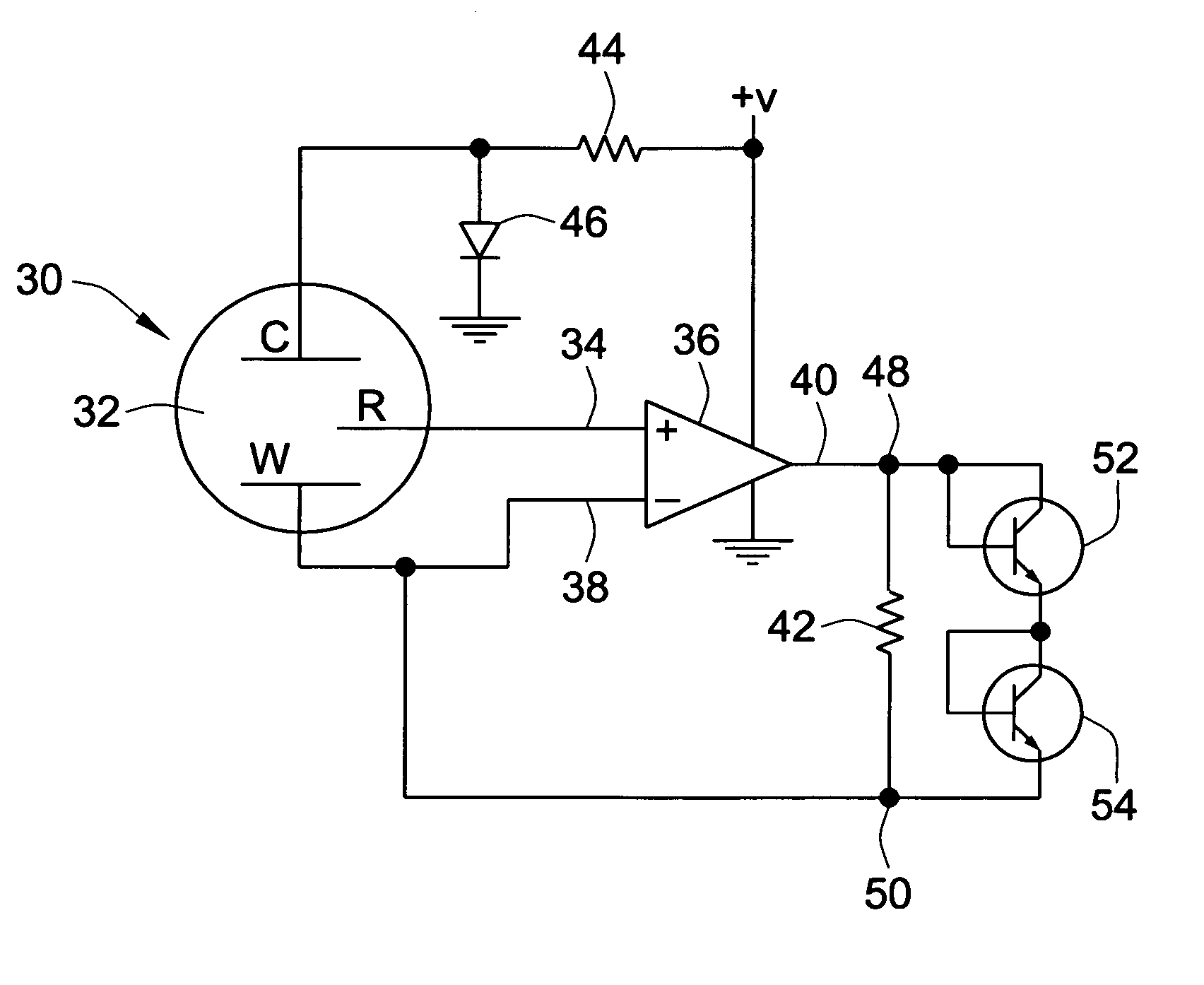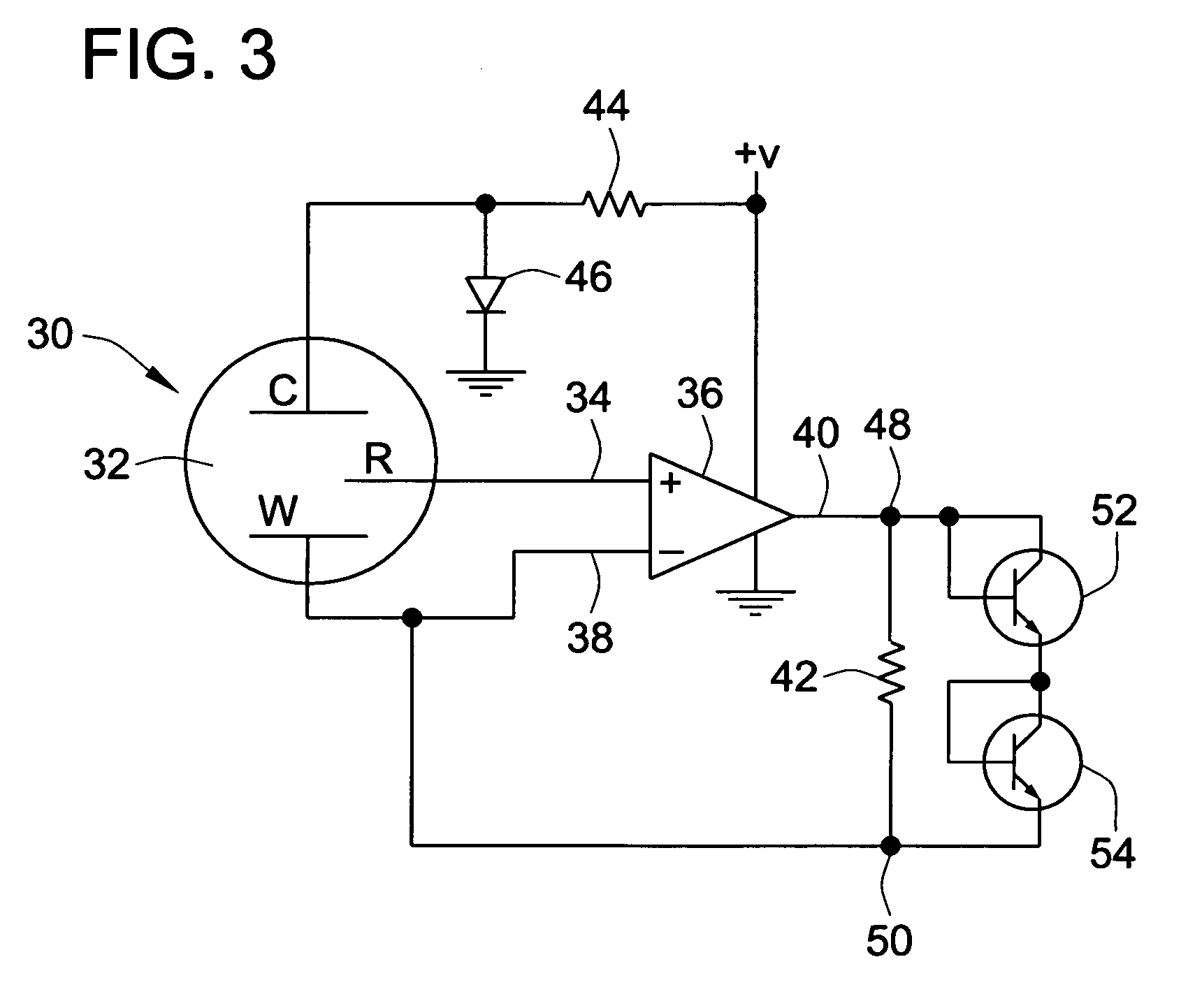Electrochemical sensing circuit having high dynamic range
a sensing circuit and high-dynamic range technology, applied in the field of electrochemical sensing circuits, can solve the problems of high frequency oscillation, negative counter electrode charge, prone to oscillation, etc., and achieve the effects of high dynamic range, high sensitivity, and rapid sensor recovery
- Summary
- Abstract
- Description
- Claims
- Application Information
AI Technical Summary
Benefits of technology
Problems solved by technology
Method used
Image
Examples
Embodiment Construction
[0020]Referring to FIG. 3, the electrochemical cell 30 is of conventional construction and comprises a chamber, or cavity 32 into which a gas to be monitored is introduced. Three spaced electrodes W, C, R are located in the cavity 32. Electrode R constitutes a reference electrode and is connected to an input 34 of an operational amplifier 36. A second input 38 of amplifier 36 is connected to the electrode W. The output 40 of the amplifier 36 is connected to electrode W through a feedback loop which includes resistor 42. The counter electrode, C, is connected to a reference voltage generated by resistor 44 and diode 46 which is connected to the circuit ground.
[0021]The amplifier 36 feeds back current through resistor 42 to maintain the working and reference electrodes, W and R respectively, at the same potential.
[0022]When gas is sensed by the cell 30, the output of amplifier 36 goes positive to deliver a positive current into the working electrode W, and at the same time, the electr...
PUM
| Property | Measurement | Unit |
|---|---|---|
| polarity | aaaaa | aaaaa |
| voltage | aaaaa | aaaaa |
| concentration | aaaaa | aaaaa |
Abstract
Description
Claims
Application Information
 Login to View More
Login to View More - R&D
- Intellectual Property
- Life Sciences
- Materials
- Tech Scout
- Unparalleled Data Quality
- Higher Quality Content
- 60% Fewer Hallucinations
Browse by: Latest US Patents, China's latest patents, Technical Efficacy Thesaurus, Application Domain, Technology Topic, Popular Technical Reports.
© 2025 PatSnap. All rights reserved.Legal|Privacy policy|Modern Slavery Act Transparency Statement|Sitemap|About US| Contact US: help@patsnap.com



